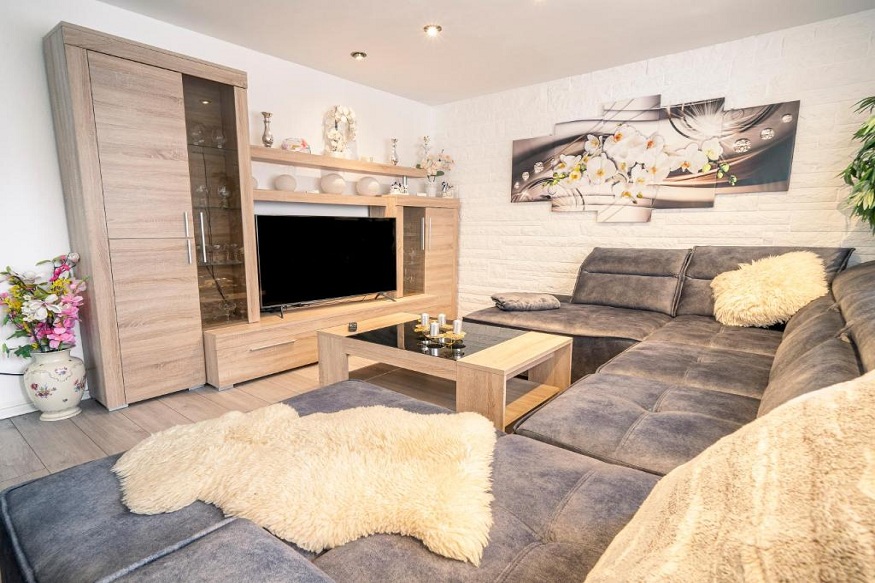Shopping for furniture can be fun, especially when you find something that fits perfectly with your home and style. As furniture shopping can be a significant financial commitment, the question is: Can you negotiate at a furniture store? You can usually negotiate. Negotiation is a good way to get quality furniture and save money.
Furniture Stores: You can bargain!
Furniture stores offer flexible pricing, unlike other retail environments. Negotiation can be a good option for a number of reasons.
- Furniture is usually marked up more than other products. This allows retailers to offer discounts on products and still make a profit.
- Seasonal sales, overstocks: Stores have to clear their inventory so that they can make room for new collections. Negotiating on clearance items or overstocked products can get you a better deal.
- Independent Stores and Smaller Stores: Independent stores have more control over pricing than chain retailers.
- Furniture Stores Compete – Retailers compete with one another. It can be used to encourage sales representatives by providing discounts or specials.
Negotiation: When to Use It and How?
A successful negotiation depends on the timing. Here are the best times to ask for a discount.
- Most stores have sales targets at the end a quarter or month.
- Black Friday, Black Friday sales, and major holidays all offer great bargaining opportunities.
- Shop during off-seasons: When there is low demand (such as at the end of the summer or after the holidays), you can find better deals as retailers want to sell their stock.
- Bulk discounts on multiple items: Some stores offer discounts if you purchase several products at once.
How to Negotiate at a Furniture Store
These tips can help you negotiate a better price.
1. Do Your Research
- Compare Prices: Compare prices for similar products online and in other stores. Comparing the price of similar products in other stores and online can help you determine if a retailer is charging a reasonable amount.
- Verify Reviews and Quality of Furniture: Ensure that the furniture’s quality justifies its cost. Well-informed customers can better negotiate.
2. Be confident and polite
- Negotiation is best done with respect. A polite attitude can help you build a good relationship with the salesperson.
- Confidence is key. Prepare to explain your reasoning and why you believe a discount is warranted.
3. Open-ended Questions
- Ask questions rather than demanding discounts.
- This is your best price.
- Is there a current discount or promotion available for this item?
- Offer discounts for multiple purchases and cash payments?
These questions will show you are interested and can open the door for negotiation.
4. Be ready to walk away
- Prepare to leave the store if they refuse to negotiate a price. If they are afraid of losing a sale, many retailers will lower their prices.
- This is also a good time to explore other options and compare offers.
5. Leverage Inaccuracies
- Carefully examine the furniture. Mention any minor flaws such as a scratch, a dent or other small imperfections. A discount is available if you ask. Many stores will reduce the price on items that are slightly damaged.
6. Ask about Perks
- Ask for extra benefits, like:
- Free delivery
- Free assembly
- Extended warranties
- Future Purchase Discounts
These features can increase the value and quality of your purchase.
7. Offer Cash Payment
- Some stores may be more willing to bargain with you if they know you are paying cash. Retailers can reduce prices by reducing processing fees.
8. You can negotiate discounts or floor models.
- Most clearance items and floor models can be negotiated. These items are frequently discounted by stores because they have been displayed and may be slightly worn.
Furniture Negotiation Myths
Myth 1 – Prices are fixed
Many retailers, especially independent stores and during sale events, have built-in flexibility, even though certain chains may have stricter policy.
Myth 2 Only large spenders can negotiate
Negotiation is not limited to expensive items. If you’re polite and prepared, even small purchases can qualify for discounts.
Myth 3: You need to bargain aggressively
Negotiation doesn’t mean confrontation. Respectful and friendly conversations can produce more results than aggressive bargaining.
Negotiation may not always be an option
Negotiation may not always be possible.
- Some stores have a strict policy of fixed prices, which does not allow for any negotiation.
- Items that are already discounted: Many clearance and sale items have been marked down to their lowest prices.
- Furniture that is mass produced and affordable often has smaller profit margins, leaving less room for discounts.
Negotiating with a furniture store is possible, but you must be confident and prepared. By researching prices, and by being polite, you can negotiate a lower price or get additional benefits. Flexibility and timing are key. Being flexible and knowing when to negotiate can make all the difference.
Furniture doesn’t have to cost the full price. With the right approach, you can find beautiful pieces of furniture that fit your style and budget. Enjoy your shopping!
This article was written by an expert at Miracle Furniture. Miracle Furniture, your Tampa Furniture stores to create beautiful and comfortable living spaces is located in Hillsborough County. We are proud to offer a carefully curated selection of high-quality furnishings and decor that will suit any style. From timeless classics to sleek, modern designs. Our wide range of furniture and decor is perfect for furnishing a home or refreshing a room. It combines high-quality craftsmanship with options that are affordable to suit any budget. Our knowledgeable and friendly team will help you choose pieces that enhance your everyday life, reflect your personality, and are in line with your style. Come visit our showroom and let us transform your home into your dream home.

